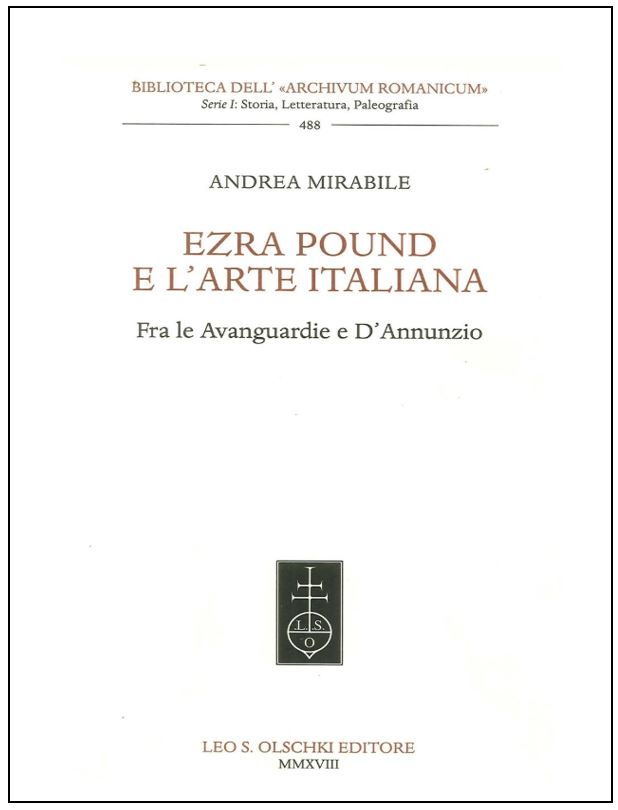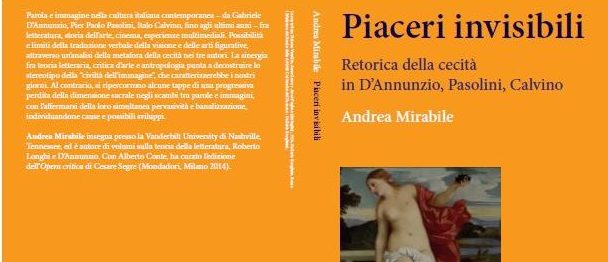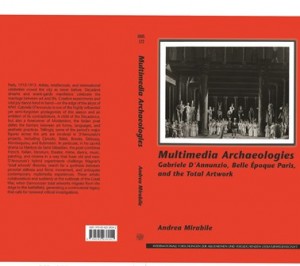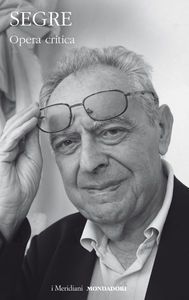Andrea Mirabile
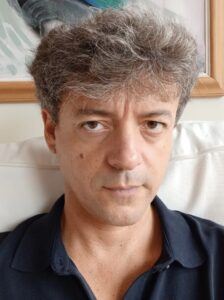 Andrea Mirabile
Andrea Mirabile
Associate Professor, Italian and Cinema & Media Arts
andrea.mirabile@vanderbilt.edu
Furman 224…
…
Education
Laurea, Università degli Studi di Milano, 2000
Dottorato, Università degli Studi di Milano, 2003
PhD, University of North Carolina at Chapel Hill, 2005
Research Interests
My research interests focus primarily on three fields: relationships between verbal and visual arts in Italian culture, cultural interplays between Italy and France, and literary theory.
Early in my career, I studied literature with attention to how texts are influenced by historical backgrounds from a philological perspective. My first book, Le strutture e la storia (2006), deals with the evolution of theory from structuralism to semiotics, particularly in the works of Avalle, Corti, Eco, and Segre. I point out how these scholars have moved beyond the classic opposition between historicism and semiotics, by mediating between the historical, the philological, and the theoretical. In this book, I use the same approach in order to reveal both the achievements and the contradictions of several protagonists of contemporary critical discourse. Aporias such as those found in my articles on Barthes, Benjamin, and De Man underlie my fascination with literary theory, whose contradictory tensions open fertile intellectual paths.
Theory strives to challenge the accepted borders between national traditions and question the classificatory boundaries between academic fields. As an Italianist, I decided to engage these issues by studying the interrelations between the textual and the visual in a series of articles on Calvino, Celati, Chiara, and Palandri. Furthermore, I found that the parallels between visual and verbal arts were summarized by the greatest Italian art historian of the 20th century, Longhi. Several of my articles are related to Longhi and his disciples (Arbasino, Banti, Pasolini, and Testori): in these, I stress the consequences of applying his theory of “equivalenze verbali” to interpreting post-WWII Italian poets, novelists, and filmmakers. My archival research in Italy uncovered several unpublished letters exchanged by the art historian and his followers, some of which I included in my second book, Scrivere la pittura (2009).
After Scrivere la pittura, I wanted to expand my research by looking for other connections among modern Italian and French authors who were inspired by the visual arts. D’Annunzio—one of Longhi’s aesthetic forebears—created several works in both Italian and French that strived to overcome the distinctions between writing, reading, and seeing. Thanks to the generosity of the Vittoriale degli Italiani, D’Annunzio’s museum-home and archive, I was able to study a large number of unpublished documents that prove some Dannunzian dramas, in particular Le Martyre de Saint Sébastien and La Pisanelle, resulted from intense dialogue between the poet and several of the period’s major figures across the arts, including Brooks, Canudo, and Rubinstein. My third book, Multimedia Archaeologies (2014), examines how, in anticipation of present-day multimedia creations, D’Annunzio’s French-Italian plays were conceived as Wagnerian ‘total artworks’ that could be simultaneously read as poems, performed as theatrical experiments in more than one language, or adapted into films.
While I was writing Multimedia Archaeologies, I realized that the interanimation between the verbal and the visual is more complex than I previously thought. In particular, I noticed a recurrent paradox: images and words intensify their communications when sight is reduced or suspended. Ironically, the reduction of vision strengthens both the awareness of its limitations and the exchanges between words and images. My fourth book, Piaceri invisibili (2017), examines the metaphor of blindness in modern and contemporary Italian culture; focusing on D’Annunzio, Pasolini, and Calvino, I address how the cross-fertilization between the frailty of vision and the horizons of writing influences and is influenced by other aesthetic realms, including pictorial, filmic, and mixed media practices.
Gabriele D’Annunzio continues to be at the core of my current research, which analyzes the influence of the Italian author on the American poet Ezra Pound. Pound lived mostly in Italy and his verses reflect both the poet’s love for Italian art (in particular the Quattrocento) and his admiration for D’Annunzio (especially Dannunzian writings on Venice). In my new project, I stress the Imaginifico’s importance for the author of the Cantos, in order to explore the ambivalences of Pound’s ekphrastic poetry, which constantly fluctuates between Decadent and Modernist tropes.
Representative Publications
Books
- Alberto Burri. Parole e immagini. Città di Castello: Fondazione Palazzo Albizzini Collezione Burri, 2022.
- Raccontare immagini. Milano: Editrice Bibliografica, 2019
- Ezra Pound e l’arte italiana. Fra le Avanguardie e D’Annunzio. Firenze: Olschki, 2018. [For reviews and more information click here.]
- Piaceri invisibili: Retorica della cecità in D’Annunzio, Pasolini, Calvino. Roma: Carocci, 2017.
- Multimedia Archaeologies: Gabriele D’Annunzio, Belle Époque Paris, and the Total Artwork. Amsterdam/New York: Rodopi, 2014.
- Scrivere la pittura. La ‘funzione Longhi’ nella letteratura italiana. Ravenna: Longo, 2009. (Winner of the AAIS prize – 2009), Cited with context on Longhi [here].
- Le strutture e la storia: La critica italiana dallo strutturalismo alla semiotica. Milano: LED, 2006.
Edited Books
- Segre, Cesare. Opera critica. A cura di Alberto Conte e Andrea Mirabile. Milano: Mondadori, 2014.
Articles
-
“‘In mutande corte e maglietta’: Leonardo Sinisgalli e l’Ode a Lucio Fontana.” MLN 138-1 (2023): 145-166.
-
“Piero Manzoni. Libera dimensione.” Predella. Journal of Visual Arts, 53 (2023): 87-109.
- “Un dandy all’Incoronata. Walter Pater e il Bergognone.” Archivio Storico Lodigiano, CXLI (2022): 251-268.
- “Valentino Zeichen e Alberto Burri fra poesia, narrativa, e arti visive.” L’anello che non tiene. Journal of Modern Italian Literature, Vols. 29-32, NN. 1-2, Spring-Fall 2017-2020 (2021): 135-151.
- “Frammenti, rovine, ‘immaginazione ermeneutica’: Mantegna e il Novecento.” Italica 97.3 (2020): 522-538.
- “Trecentisti senesi: un dialogo critico fra Cecchi e Berenson.” Ermeneutica letteraria XVI (2020): 77-85.
- “Sanguineti, Mantegna, e l’ekphrasis tra omaggio e dissacrazione.” MLN 135-1 (2020): 281-301.
- “Fra il romanzo-saggio e l’ekphrasis: Arbasino su Mantegna.” Polifemo 17-18, Ton sur Ton. Lo stile della saggistica critica sulle arti I (2019): 33-44.
- “Giorgio Bassani tra Longhi e Morandi.” Dal particolare all’universale. I libri di poesia di Giorgio Bassani. A Cura di Valerio Capozzo. Firenze: Giorgio Pozzi Editore, 2020. 149-166.
- “‘Fili d’oro’: Literature, Painting, and Blindness in D’Annunzio’s Notturno.” Forum Italicum, 51 (2017): 356-377.
- “Pound e Pasolini: tra polemica ideologica e magistero formale.” Letteratura e letterature 11 (2017): 13-20.
- “Visione endogena e visione esogena in Palomar di Italo Calvino.” Il testo e l’opera. Studi in ricordo di Franco Brioschi, a cura di Laura Neri e Stefania Sini, Milano, Ledizioni, 2016, 507-533.
- “Lorenzo Lotto di Anna Banti: fra Longhi e Berenson.” Italica 93.2 (2016): 262-273.
- “Fili d’oro”: le arti figurative nel Notturno di Gabriele D’Annunzio. MLN 131-1 (2016): 119-138.
- Preface to “Cultural Modernism in the Americas.III: The French and Italian Avant-Garde.” AmeriQuests 12-1 (2015) http://ameriquests.org/index.php/ameriquests.
- “‘Una superficie dipinta di azzurro:” Cecità e Visione in Teorema di Pier Paolo Pasolini.” L’anello che non tiene. Journal of Modern Italian Literature 25-26 (2014): 25-52.
- Andrea Mirabile and Lynn Ramey. “Real” Bodies? Race, Corporality, and Contradiction in The Arabian Nights and Pier Paolo Pasolini’s Il fiore delle mille e una notte (1974). Attar, Katrina F. and Lynn Shutters Eds. Teaching Medieval and Early Modern Cross-Cultural Encounters. New York: Palgrave Macmillan, 2014. 141-158.
- “Il fiore delle Mille e una notte: il cinema di Pasolini fra scrittura e pittura.” Contaminazioni culturali. Musica, teatro, cinema e letteratura nell’Italia contemporanea. A cura di Fulvio Orsitto e Simona Wright. Roma: Vecchiarelli, 2014. 197-212.
- “Piero Chiara scrittore d’arte.” Il «mago del lago». Piero Chiara a cent’anni dalla nascita. A cura di Mauro Novelli. Atti del Convegno internazionale. Varese-Luino, 27-28 settembre 2013. Francesco Nastro Editore, 2014: 137-155.
- “La morte del dio. Mito e soggettività in Gabriele D’Annunzio.” Italienisch. Zeitschrift für italienische Sprache und Literatur 69 (2013): 18-33.
- “Visual Intertextualities in Gabriele D’Annunzio’s Le Martyre de Saint Sébastien” Modern Language Notes 128-1 (2013): 124-150.
- “La semiotica in Italia: i primi quarant’anni.” Italianistica. Rivista di letteratura italiana, XLI, 1, (2012): 107-116.
- “Allegory, Pathos, and Irony: The Resistance to Benjamin in Paul de Man.” German Studies Review 35.2 (2012): 319-333.
- “Documentary film as equivalence: Giuseppe Bertolucci’s Pasolini prossimo nostro (2006).” Studies in Documentary Film 5 (2011): 133-144.
- “Rhetoric of Sedution and Seduction of Rhetoric in Paul de Man’s Allegories of Reading.” Enthymema 2 (2010). http://riviste.unimi.it/index.php/enthymema/article/view/757
- Interview. “Il Sussidiario.” 12-17-2010. “Nessun analisi potrà mai sostituire il piacere della lettura.” http://www.ilsussidiario.net/articolo.aspx?articolo=134920
- “Per un dialogismo figurale: Alberto Arbasino ed Enrico Palandri tra letteratura e film.” Generazione in movimento. Viaggio nella scrittura di Enrico Palandri. Ravenna: Longo, 2010. 79-86.
- “Ricordi figurativi ne La Stanza del Vescovo di Piero Chiara.” Modern Language Notes 124-1 (2009): 254-268.
- “Ekphrasis e ironia ne Le Muse a Los Angeles di Alberto Arbasino.” Stumenti critici 2 (2008): 313-326.
- “Scacchi, cristalli, orologi: aporie della decostruzione.” Per Franco Brioschi. Saggi di lingua e letteratura italiana. A cura di Claudio Milanini e Silvia Morgana. Milano: Cisalpino, 2007. 447-453.
- “Dallo strutturalismo al poststrutturalismo: Michel Foucault.” Letteratura e letterature 1 (2007): 139-153.
- “Discreti messaggeri del fuori. Appunti su Italo Calvino e le arti figurative.” Sul ri-uso. Pratiche del testo e teoria della letteratura. A cura di Edoardo Esposito. Milano: Franco Angeli, 2007. 79-96.
- “Retorica della seduzione e seduzione della retorica nelle Allegories of Reading di Paul de Man.” Strumenti critici 1 (2006): 145–158.
- “Gli affreschi di Piero ad Arezzo: Pier Paolo Pasolini tra Longhi e Gramsci.” Il lettore di provincia 123 (2006): 121–132.
- “Peccato e salvezza nella poesia di Giovanni Testori: Crocefissione tra figurazione ed ineffabile.” La Fusta 13 (2005): 1–8.
- “Roland Barthes tra ‘morte dell’autore’ e biografia.” Intersezioni 1 (2005): 117-32.
- “Equivalenze pittorico-verbali in Roberto Longhi e Anna Banti.” Romance Notes 43 (2003): 271–278.
Organized Events @ Vanderbilt
-Jan. 24, 2008. Lecture by Prof. Luca Barattoni, Clemson U: “Fernando Di Leo and the Italian Crime Thriller Genre of the 70s: Its Influence on Quentin Tarantino and Its Recent Developments” http://www.vanderbilt.edu/news/audio?xtags=lectures-events
– Apr. 3, 2008. Lecture by Prof. Pier Massimo Forni, Johns Hopkins U: “Life is a Relational Experience: Civility, Ethics and Quality of Life”
http://law.vanderbilt.edu/vulsvideos.asp
– Sep. 17, 2010 Lecture by Matteo Soranzo, Assistant Professor of Italian, McGill University, Montreal, Canada, “Poetry and Society in Quattrocento Naples: Giovanni Pontano and his Intellectual Community”
– March 19th, 2014: Professor Roberto Dainotto, Romance Studies, Duke University: “‘It’s not a Question of Right or Wrong’: The Law in the Age of the Novel”
– “Cultural Modernism III: The French and Italian Avant-Garde.” Lectures by R. Barsky, Y. Boyer, E. Livorni, F. Luisetti, A. Mirabile, L. Modena, J. Rattner, T. Sharpley-Whiting, J. Warren, and J. Wild. W.T. Bandy Center for Baudelaire and Modern French Studies. October 23-24, 2014.
– Edoardo Esposito, Universita degli Studi di Milano: “Art as Craft: Poe, Baudelaire, and Jakobson” September 2, 2016, W.T. Bandy Center for Baudelaire and Modern French Studies.
-“CENSORED: Controversial Art in Modern and Contemporary French Culture” (January 27 – April 2, 2020): Films and Lectures Series, including lectures by Prof. Richard Neupert (UGA) and Rachel Mesch (Yeshiva U)
-Stefano Ballerio, Università degli Studi di Milano: “The Dreyfus Affair: The Media and the Intellectuals,” March 27, 2024 (Classic Italian Cinema – Italian 3640)
– Luca Barattoni, Clemson University: “The Cinema of Alice Rohrwacher: Happy as Lazzaro, the freedom of forced labor, and the New Forms of Serfdom,” April 19, 2024 (Classic Italian Cinema – Italian 3640)
Courses @ Vanderbilt
ITA 2614 — Italian Conversation
ITA 3000 — Introduction to Italian Literature
ITA 3640 — Classic Italian Cinema
ITA 3641 — Contemporary Italian Cinema
FREN 8080 — Seminar in French Film


